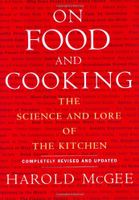Even more fortunate and complex are the reactions responsible for the cooked color and flavor of bread crusts, chocolate, coffee beans, dark beers, and roasted meats, all foods that are not primarily sugar. These are known as the Maillard reactions, after Louis Camille Maillard, a French physician, who discovered and described them around 1910. The sequence begins with the reaction of a carbohydrate molecule (a free sugar or one bound up in starch; glucose and fructose are more reactive than table sugar) and an amino acid (free or part of a protein chain). An unstable intermediate structure is formed, and this then undergoes further changes, producing hundreds of different by-products. Again, a brown coloration and full, intense flavor result. Maillard flavors are more complex and meaty than caramelized flavors, because the involvement of the amino acids adds nitrogen and sulfur atoms to the mix of carbon, hydrogen, and oxygen, and produces new families of molecules and new aromatic dimensions (see illustration below, and box).


